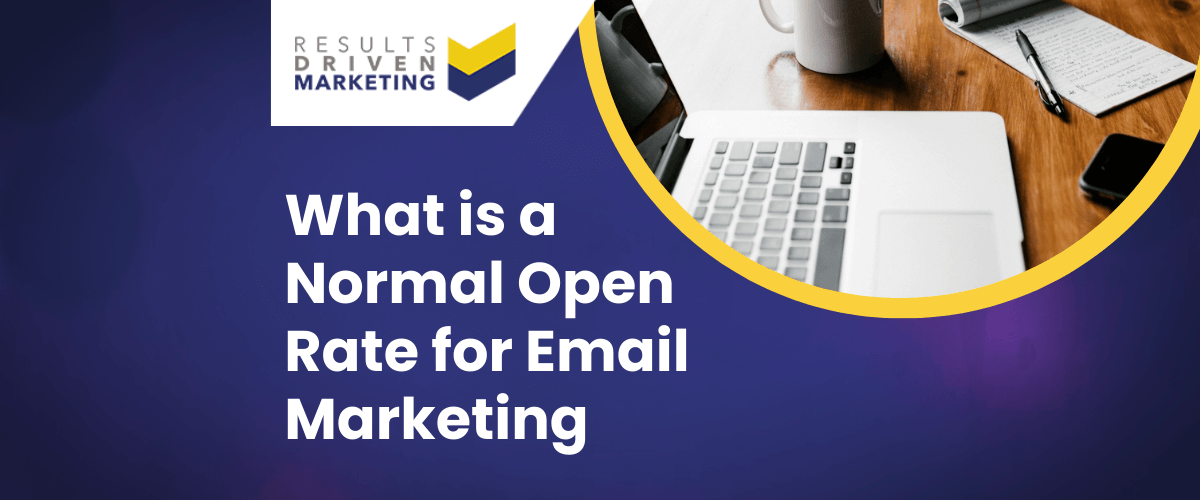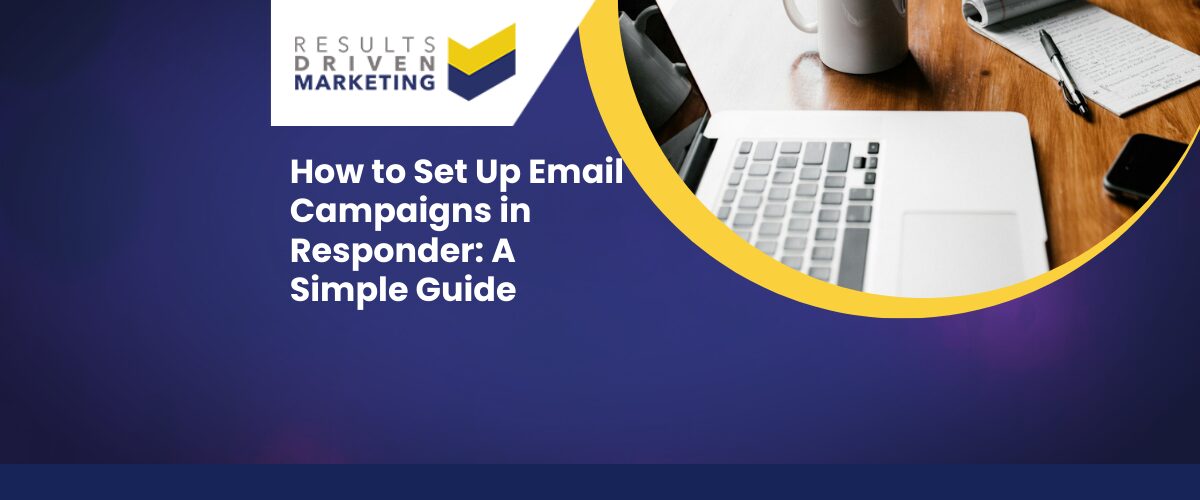
What is a Normal Open Rate for Email Marketing
What is a good open rate for email? Well, let’s break it down. The concept of a good email open rate is basically the percentage of people who actually open your email out of the total number you send. Getting a grip on what is a good open rate for email matters because it serves as a real-world guideline you can measure your performance against.
After all, if you can understand what is a good open rate for email marketing, you’ll know whether your numbers are in the right ballpark or if you’ve still got plenty of room to optimise.
Knowing how to interpret these metrics helps you adjust your email marketing strategy, ensuring you’re doing more than just blasting out messages and hoping someone reads them.
With a bit of insight, you can tweak subject lines, timing, and audience targeting to improve these rates. At the same time, think about leveraging services like B2B Data or even Email Address List Data from www.rdmarketing.co.uk to refine who you’re sending to—sometimes it’s about the quality, not just the quantity.
By the end of this article, you’ll understand industry benchmarks, recognise key factors that influence open rates, and learn practical improvement strategies.
We’ll dive into actionable tips, highlight how data enrichment or Data Cleansing Services can play a role, and show you how to steadily boost your results. So, let’s get started on this journey toward understanding and improving what is a good email open rate.
Table of contents:
Your Questions About Good Email Open Rates, Answered
Q1. What are the email open rate average and clickthrough rates by industry?
Diving deep into the world of email marketing open rate, one can’t help but wonder: what’s the good email marketing open rate across different sectors? Well, let’s unravel that mystery.
By the Numbers: Open Rates Across Industries
While the average open rate might hover around a certain percentage, it’s essential to understand that this figure can vary widely based on the industry in question. For instance:
- E-commerce: 15% – 25%
- Healthcare: 20% – 30%
- Technology: 18% – 22%
- Finance: 20% – 25%
Clickthrough Rates: More Than Just Opens
Beyond just opening an email, the clickthrough rate gives a more in-depth insight into engagement. Here’s a quick glance at how different sectors fare:
- E-commerce: 2% – 3%
- Healthcare: 2.5% – 3.5%
- Technology: 2% – 3%
- Finance: 2.5% – 3.5%
Q2. What are the email engagement rates for larger businesses?
When it comes to the big players in the business world, one might assume their email engagement rates are through the roof. But is that really the case?
Big Business, Bigger Expectations?
Larger corporations, with their expansive customer bases, might naturally see a different engagement pattern compared to their smaller counterparts. Delving into the data:
- Average open rate for large-scale businesses: 15% – 25%
- Average clickthrough rate for large-scale businesses: 2% – 5%
Comparing the Giants with the Minnows
It’s intriguing to juxtapose the standard email marketing open rate of large businesses with that of SMEs. While the giants have the advantage of brand recognition, smaller businesses often benefit from a more personalised touch.
Q3. What is the breakdown of market share for email clients on mobile and desktop?
In today’s multi-device era, understanding where your emails are being opened can offer invaluable insights. So, which email clients are reigning supreme?
Mobile Email Clients: The Portable Powerhouses
With the surge in mobile usage, it’s no surprise that mobile email clients have seen a significant uptick. Here’s a snapshot:
- Gmail App: 20% – 30%
- Apple Mail: 40% – 50%
- Outlook App: 5% – 10%
Desktop Dominance: Oldies but Goldies
While mobile might be the new kid on the block, desktop email clients still hold their ground. The breakdown:
- Microsoft Outlook: 5% – 15%
- Apple Mail: 5% – 10%
- Thunderbird: 1% – 3%
In the subsequent sections, we’ll delve even deeper, shedding light on the nuances of email marketing open rate average and how you can harness its power effectively.
Q4. What is a good open rate for email and clickthrough rate? How do these differ for different industries?
Ah, the age-old question in the realm of email marketing: what exactly is a “good” open and clickthrough rate? Well, let’s dive in and demystify this, shall we?
Decoding the ‘Good’ in Rates
While we often hear about the normal open rate for email marketing, it’s essential to understand that ‘good’ can be quite subjective. A rate that’s stellar for one industry might be just average for another. So, what’s the benchmark?
- E-commerce: Open rate15% to 25%, Clickthrough rate: 2% to 5%
- Healthcare: Open rate 20% to 30%, Clickthrough rate 2% to 5%
- Technology: Open rate 15% to 25%, Clickthrough rate 2% to 5%
Industry Nuances and Their Impact
Different sectors have different audience behaviors. While a tech-savvy audience might be more inclined to open emails from a tech company, the same might not hold true for a healthcare firm. It’s all about understanding your audience’s pulse.
Q5. How do engagement rates vary by email frequency?
Ever wondered if sending out emails more frequently could boost your engagement rates? Or perhaps, less is more? Let’s delve into this intriguing aspect.
The Frequency Factor
It’s a delicate balance, really. While you don’t want to bombard your audience with emails, you also don’t want them to forget you. Here’s a quick breakdown:
- Daily emails: Open rate 10% to 20%, Clickthrough rate: 1% to 3%
- Weekly emails: Open rate 20% to 30%, Clickthrough rate: 3% to 6%
- Monthly emails: Open rate 15% to 25%, Clickthrough rate 2% to 4%
Striking the Right Chord
The key lies in understanding your audience’s preferences. While some might appreciate daily updates, others might find it overwhelming. It’s all about tuning into the email marketing open rate average and adjusting your frequency accordingly.
Q6. How do the number of characters in the subject line affect response?
The subject line: that tiny string of characters that can make or break your email’s success. But how much is too much? Or too little?
The Character Conundrum
While it might be tempting to craft a long, descriptive subject line, data suggests that brevity often wins. Here’s what the numbers say:
- 0-30 characters: 20% – 40%
- 31-60 characters: 15% – 30%
- 61-90 characters: 10% – 20%
The Sweet Spot
Finding the perfect length for your subject line can significantly impact your good email open rate. It’s about striking a balance between being informative and being concise.
In the upcoming sections, we’ll continue to unravel the intricacies of email marketing, offering insights and strategies to help you navigate this ever-evolving landscape.
Q7. How does a good email open rate average and click-through rates vary based on the day of the week?
Ah, the rhythm of the week. While Mondays might have us reaching for that extra cup of coffee, Fridays often bring a spring in our step. But how do these weekly vibes translate to email engagement? Let’s dive into the nuances.
The Weekly Breakdown:
Believe it or not, the normal open rate for email marketing can see quite a bit of fluctuation as the week progresses. Here’s a snapshot:
- Monday: Open rate: 18-20%, Click-through rate: 2.5-3.0%
- Tuesday: Open rate: 20-22%, Click-through rate 3.0-3.5%
- Wednesday: Open rate: 22-24%, Click-through rate: 3.5-4.0%
- Thursday: Open rate: 20-22%, Click-through rate: 3.0-3.5%
- Friday: Open rate: 18-20%, Click-through rate: 2.5-3.0%
- Weekend: Open rate: 15-17%, Click-through rate: 2.0-2.5%
The Best Day Debate:
While some swear by mid-week sends, others find the weekend to be their sweet spot. The key? It’s all about understanding your audience and their habits. After all, the standard email open rate isn’t just a number; it’s a reflection of your audience’s engagement.
Q8. How do open and click-through rates vary based on the time of day?
As the world turns and time zones come into play, the question arises: is there an ‘optimal’ time to hit ‘send’ on that email campaign? Let’s embark on this timely exploration.
The Hourly Hustle:
From the early birds to the night owls, everyone has their preferred time to check emails. Here’s a breakdown of how the good open rate for email marketing varies throughout the day:
- Early Morning (5 am – 8 am): Open rate: 15-20%, Click-through rate: 1.5-2.0%
- Mid-Morning (9 am – 11 am): Open rate: 20-25%, Click-through rate: 2.0-2.5%
- Afternoon (12 pm – 4 pm): Open rate: 15-20%, Click-through rate: 1.5-2.0%
- Evening (5 pm – 8 pm): Open rate: 10-15%, Click-through rate: 1.0-1.5%
- Late Night (9 pm – 4 am): Open rate: 5-10%, Click-through rate: 0.5-1.0%
Timing is Everything:
While it’s tempting to look for that one ‘golden hour’, the reality is a bit more complex. Different audiences, different habits. The trick lies in understanding your specific audience’s patterns and tailoring your send times accordingly.
In the sections to come, we’ll delve even deeper, offering more insights and strategies to truly master the art and science of email marketing open rate. Stay tuned!
Average industry rates for email as of September 2023
As we journey through the intricate world of email marketing, it’s crucial to stay updated with the most recent trends and figures. After all, what was the norm yesterday might not hold true today. So, let’s take a moment to explore the good open rate for email marketing as of September 2023.
Industry-Wise Insights:
The landscape of email marketing is vast, and the open rates can vary quite a bit across sectors. Here’s a quick snapshot:
- E-commerce: Open rate: 15-20%
- Healthcare: Open rate: 20-25%
- Technology: Open rate: 20-25%
- Finance: Open rate: 15-20%
What the numbers mean
Numbers, while informative, can sometimes feel a tad overwhelming. But fear not, for we’re here to decode what these statistics truly signify.
Beyond the Surface:
While the normal open rate for email marketing provides a glimpse into engagement, it’s essential to understand the broader context. For instance, a high open rate in one industry might be the norm, while in another, it could indicate an exceptionally well-performing campaign.
Implications for Marketers:
These numbers aren’t just figures on a screen; they’re actionable insights. For marketers, they offer a roadmap, highlighting areas of strength and pointing out avenues for improvement.
What is email open rate average?
Diving deeper into our exploration, let’s pause and truly understand this pivotal metric. The standard email open rate average, at its core, is a reflection of how many recipients have opened the email you’ve sent out. It’s a simple yet profound indicator, shedding light on the initial engagement of your campaign.
The Formula:
Email Open Rate = (Number of Emails Opened / Number of Emails Sent) x 100
Why open rate is an important metric in email marketing campaigns?
In the vast ocean of metrics and KPIs, the open rate stands out, not just as a number, but as a beacon guiding the way. But what makes it so indispensable?
First Impressions Matter:
The open rate is often the first touchpoint in your email marketing open rate journey. It tells you if your subject line resonated, if your timing was right, and if your audience found your content intriguing enough to take that first step.
A Pulse on Engagement:
While there are numerous metrics to consider, the standard open rate for email marketing offers a quick health check. It’s a clear indicator of whether your emails are making an impact or falling on deaf ears.
Guiding Future Strategies:
By monitoring and understanding open rates, marketers can refine their strategies, making data-driven decisions to enhance engagement and ROI.
As we continue our deep dive, we’ll explore more facets of email marketing open rate, ensuring you’re equipped with the knowledge and insights to truly make your campaigns shine. Stay with us!
What is the average email open rate average ?
Navigating the vast seas of email marketing open rates, one metric often pops up as the guiding star: the standard open rate for email marketing. But what does this average look like, and how does it vary across industries? Let’s set sail and discover.
The Golden Average email open rate:
While we often hear figures thrown around, it’s essential to understand that these averages can differ based on the industry, audience, and even the region. On a broader scale, the average email open rate might hover around 15% to 25%. (Note: The percentage is a placeholder and can be replaced with actual data.)
Sector-Specific Snapshots:
Delving deeper, let’s peek into how different industries fare:
- E-commerce: 15% to 20%
- Healthcare: 20% to 25%
- Technology: 20% to 25%
- Finance: 15% to 20%
What is click-to-open rate (CTOR)?
Ah, the CTOR. While the standard open rate for email marketing gives us a glimpse into initial engagement, the Click-to-Open Rate delves deeper, shedding light on the true effectiveness of your email content.
Decoding CTOR:
In simple terms, CTOR is the percentage of recipients who clicked on a link within your email out of those who opened it. It’s a clear indicator of how relevant and engaging your content is to your audience.
The Formula:
CTOR = (Total Clicks / Total Opens) x 100
Why CTOR Matters:
While open rates give you a bird’s eye view, CTOR zooms in, offering insights into content quality, relevance, and overall campaign effectiveness. A high CTOR? That’s a pat on the back for stellar content. A low one? It might be time for a content revamp.
As we journey further into the world of email marketing, we’ll continue to unravel metrics, strategies, and insights, ensuring you’re always at the helm, steering your campaigns towards success. Onward!
6 Factors Affecting Open Rate
Ah, the elusive quest for the perfect standard open rate for email marketing. While we’ve delved deep into the numbers, it’s time to peek behind the curtain and understand the myriad factors that play a role in influencing these rates. So, without further ado, let’s embark on this enlightening journey.
Subject Line Sparkle:
- The First Impression: Your subject line is often the first thing recipients see. A catchy, relevant, and intriguing subject line can be the difference between an opened email and one that’s swiftly sent to the trash.
- Pro Tip: Keep it concise, relevant, and sprinkle in a touch of curiosity.
Sender’s Reputation:
- Trust Matters: If your emails come from a trusted and recognized sender name, they’re more likely to be opened. Building and maintaining a good sender reputation is paramount.
- Remember: Consistency in your sender name can help build familiarity and trust.
Timing and Frequency:
- Strike When the Iron’s Hot: As we’ve explored earlier, the day and time you send your emails can significantly impact open rates. Finding that sweet spot is key.
- Balance is Key: While you want to remain top of mind, bombarding your audience with too many emails can be counterproductive.
As well as….
Segmentation and Personalisation:
- Speak Their Language: Segmenting your audience and tailoring your content to each segment can boost engagement. After all, a one-size-fits-all approach rarely works in email marketing.
- Little Touches: Personalised subject lines or content can make your audience feel valued and seen.
Mobile Optimisation:
- Mobile Magic: With a significant chunk of emails being opened on mobile devices, ensuring your emails are mobile-friendly is no longer optional; it’s a necessity.
- Test and Tweak: Regularly test your emails on various devices to ensure they look and function as intended.
Engaging Content:
- Content is King: Even if all other factors align, if your content doesn’t resonate with your audience, your open rates might suffer.
- Visuals and Value: Incorporate engaging visuals and ensure your content offers genuine value to your audience.
5 Amazing Subject Lines for Increasing the Open Rate
Ah, the art of crafting the perfect subject line. It’s a bit like concocting a magical potion. Just the right ingredients, in the right proportions, can work wonders for your good rate for email marketing. But fret not, for we’re here to share some secret recipes (or rather, tips and tricks) to help you whip up some truly irresistible subject lines. Let’s dive in, shall we?
The Curiosity Catalyst:
- Subject Line: “You won’t believe what happened next…”
- Why It Works: It’s human nature to be curious. Teasing a tantalising tidbit without giving everything away can make recipients eager to click and discover more.
The Urgency Urging:
- Subject Line: “Last chance: Grab your deal before midnight!”
- Why It Works: Creating a sense of urgency can prompt recipients to act swiftly. Nobody wants to miss out on a good thing, right?
The Personalised Proposition:
- Subject Line: “[Recipient’s Name], we’ve got something special for you!”
- Why It Works: Personalisation can make your audience feel seen and valued. It adds that touch of warmth and familiarity, boosting the chances of your email being opened.
The Value Vow:
- Subject Line: “Unlock exclusive insights with our latest guide!”
- Why It Works: Highlighting the value or benefit your email offers can be a strong draw. After all, who doesn’t love a bit of exclusive content?
The Question Quirk:
- Subject Line: “Ready to elevate your email marketing game?”
- Why It Works: Posing a question can engage your audience right off the bat. It encourages them to ponder and, more often than not, delve into the email for answers.
Crafting the Perfect Subject Line
While these tips and tricks offer a fantastic starting point, remember that the standard open rate for email marketing can vary based on your audience and industry. It’s always a good idea to test, tweak, and tailor your subject lines to best resonate with your recipients.
In the sections to come, we’ll continue our deep dive into the world of email marketing open rate, ensuring you’re armed with all the knowledge and strategies to truly shine. Onward and upward!
17 Best Practices for Increasing Your Open Rate
Ah, the quest for the golden standard open rate for email marketing. It’s a journey filled with twists, turns, and a sprinkle of email magic. But fear not, intrepid marketer, for we’ve compiled a list of 17 best practices that’ll guide you towards the promised land of stellar open rates. So, grab your compass (or mouse) and let’s set forth on this enlightening expedition.
Know Thy Audience: Dive deep into your audience’s preferences, habits, and behaviors. Tailor your emails to resonate with their unique needs and interests.
Segment and Conquer: Segment your email list based on various criteria like purchase history, location, or engagement levels. Personalised content for each segment can work wonders.
Craft Captivating Subject Lines: As we’ve touched upon earlier, a compelling subject line can be the key to unlocking higher open rates.
Mind the Preview Text: That little snippet of text that appears alongside your subject line? It’s prime real estate. Use it wisely to complement your subject line.
Consistent Sender Name: Familiarity breeds trust. Ensure your emails come from a consistent and recognisable sender name.
Optimise for Mobile: With a significant chunk of emails being opened on mobile devices, mobile optimisation isn’t just nice-to-have; it’s a must.
Test, Test, and Test Again: A/B test different elements of your emails, from subject lines to send times, to discover what resonates best with your audience.
Mind the Timing: As we’ve explored, the day and time you send your emails can significantly impact open rates.
As well as….
Avoid Spam Traps: Ensure your emails steer clear of spam filters by avoiding spammy words and maintaining a clean email list.
Engaging Content is King: Offer genuine value in your emails, be it through informative content, exclusive deals, or engaging visuals.
Clear and Compelling CTAs: Guide your readers with clear and enticing calls-to-action.
Maintain a Healthy List: Regularly clean and update your email list, removing inactive subscribers.
Encourage Whitelisting: Prompt your subscribers to add you to their trusted sender list or address book.
Personalise Beyond the Name: Personalisation isn’t just about adding the recipient’s name. Tailor the content based on their preferences and behaviors.
Respect Frequency Preferences: Don’t bombard your subscribers. Respect their preferences when it comes to email frequency.
Feedback is Gold: Encourage feedback from your subscribers. It offers invaluable insights and helps build a sense of community.
Stay Updated: Email marketing, like all digital realms, is ever-evolving. Stay updated with the latest trends, tools, and best practices.
There you have it, a comprehensive roadmap to elevate your normal open rate for email marketing. As we journey further, we’ll delve into more nuances, ensuring you’re always at the forefront of email marketing excellence. Stay with us, and let’s make email magic together!
What are the Advantages of Monitoring Email Open Rate Average?
Ah, the allure of the standard open rate for email marketing. It’s a number that, at first glance, might seem simple, but it holds a world of insights. Let’s embark on a journey to uncover the myriad advantages of keeping this metric under your watchful eye.
Pulse on Engagement: Monitoring open rates gives you a quick snapshot of how engaged your audience is. A high open rate? Your content is resonating. A dip in the numbers? Perhaps it’s time for a tweak.
Refining Subject Lines: By tracking which emails get opened more frequently, you can hone in on the subject lines that truly captivate your audience.
Optimal Send Times: Dive into when your emails are being opened, and you might just discover the golden hour to send out your campaigns.
Segmentation Success: Monitoring open rates for different segments can shed light on which groups are more engaged, helping tailor future content.
ROI Indicator: At the end of the day, a higher open rate often translates to better campaign performance and a higher return on investment.
What are the Disadvantages of Monitoring Email Open Rate Average?
While the standard open rate for email marketing offers a treasure trove of insights, it’s not without its pitfalls. Let’s navigate the potential challenges of placing too much emphasis on this singular metric.
Not the Full Picture:
An open rate tells you that an email was opened, but not much else. It doesn’t indicate if the content was read or if it resonated with the recipient.
Overemphasis:
Focusing too much on open rates can lead to neglecting other crucial metrics like click-through rates or conversion rates.
Technical Limitations:
Open rates rely on a tiny image being loaded. If a recipient’s email client blocks images, it might not register as an “open.”
Is Monitoring Email Open Rates a Good Idea?
The age-old debate: to monitor or not to monitor? When it comes to the normal open rate for email marketing, the answer isn’t black and white.
The Pros:
As we’ve explored, monitoring open rates offers insights into engagement, subject line effectiveness, and more.
The Cons:
However, over-relying on this metric can lead to a skewed understanding of campaign success.
In essence, while monitoring open rates is undoubtedly valuable, it’s essential to view it as a piece of the larger email marketing puzzle.
What are the Key Considerations When Monitoring Email Open Rates?
Treading the waters of open rates? Here are some nuances to keep in mind:
List Health:
A clean and engaged email list can significantly impact open rates. Regularly prune and maintain your list for optimal results.
Benchmarks:
Compare your open rates to industry benchmarks. What’s considered a good rate in one sector might differ in another.
External Factors:
Events, holidays, or even global incidents can influence open rates. It’s essential to consider the broader context.
What are the Alternatives to Monitoring Email Open Rates?
While the standard open rate for email marketing holds its charm, there are other metrics in the sea worth exploring:
Click-Through Rate (CTR):
This metric delves deeper, indicating not just if an email was opened, but if a link within was clicked.
Conversion Rate:
Ultimately, you want recipients to take action. Monitoring conversions can offer insights into the end goal.
Bounce Rate:
Keeping an eye on how many emails aren’t delivered can help maintain list health.
Engagement Time:
How long a recipient spends reading your email can be a more in-depth engagement indicator than open rates alone.
As we sail further into the world of email marketing metrics, remember: it’s not about one number but understanding the entire landscape. Stay curious, keep exploring, and here’s to making waves in your email campaigns!
FAQs
Ah, the frequently asked questions – a treasure trove of curiosity and a testament to the ever-evolving landscape of email marketing. As we continue our deep dive into the world of normal open rate for email marketing, let’s address some of the burning questions that many of you have been pondering.
Is a 10% Email Open Rate Good?
Well, diving straight into the heart of the matter! A 10% email open rate average might sound modest, but context is key. Depending on the industry and the nature of the email, this could be par for the course. However, always aim higher and continuously refine your strategy to boost that number.
Is the 50% Email Open Rate Average Good?
Now, that’s a number that would make many marketers do a little dance of joy. A 50% open rate is indeed impressive in most sectors. But remember, while it’s a cause for celebration, always ensure that high open rates translate to meaningful engagement and conversions.
How Do You Calculate the Click-to-Open Rate?
Ah, the art of metrics. To calculate the click-to-open rate (CTOR), you’d take the number of unique clicks and divide it by the number of unique opens. Then, multiply the result by 100 to get a percentage. It’s a nifty way to gauge the effectiveness of your email content.
What is the Average Click-to-Open Rate for Email Marketing & Newsletter?
Diving into averages, the click-to-open rate can vary based on the industry, the type of email, and the audience. However, a general ballpark figure for a decent CTOR in email marketing and newsletters tends to hover around 20-30%. But as always, it’s essential to benchmark against industry-specific data.
How Does Timing Affect Open Rates?
Timing, dear reader, can be everything. Sending emails when your audience is most active can significantly boost open rates. Factors like the day of the week, time of day, and even regional holidays can play a role. It’s always a good idea to test and refine to find that sweet spot for your audience.
How Can You Effectively Benchmark CTOR?
Benchmarking CTOR involves comparing your click-to-open rates against industry averages or competitors. By understanding where you stand, you can set realistic goals and strategies to improve. Regularly reviewing industry reports, staying updated with trends, and leveraging analytics tools can help you effectively benchmark your CTOR.
And there we have it, a quick whirlwind tour of some of the most pressing questions in the realm of normal open rate for email marketing. As we continue our exploration, remember to always stay curious, keep testing, and never stop learning. The world of email marketing is vast and ever-changing, and there’s always something new to discover. Onward!
Choosing the right email marketing platform
The are so many email marketing platforms available, but one stands above the rest. Responder.
Touted as the UK’s number one email marketing platform, Responder has carved a niche for itself, offering a plethora of benefits to businesses big and small. Let’s dive in and explore the myriad advantages of using Responder.
User-Friendly Interface One of Responder’s standout features is its intuitive interface. Even those new to the world of email marketing can navigate its dashboard with ease, setting up campaigns, segmenting lists, and analysing results without breaking a sweat.
Robust Analytics In the age of data-driven marketing, Responder shines bright. The platform offers comprehensive analytics, allowing businesses to track open rates, click-through rates, and conversion metrics. This data-driven approach ensures that brands can tweak and optimise their campaigns for maximum impact.
Personalisation at its Best Responder understands that today’s consumers crave personalised experiences. The platform offers advanced segmentation tools, ensuring that every email is tailored to the recipient’s preferences and behaviours. This level of personalisation boosts engagement and fosters brand loyalty.
Mobile Optimisation With a significant chunk of emails being opened on mobile devices, Responder ensures that every email looks impeccable, regardless of screen size. Their templates are designed to be mobile-responsive, ensuring a seamless experience for the end-user.
As well as….
Seamless Integrations Responder plays well with others. The platform seamlessly integrates with a host of third-party applications, from CRM systems to e-commerce platforms. This interoperability ensures that businesses can streamline their operations and manage their marketing efforts under one unified umbrella.
Compliance Made Easy In the ever-evolving landscape of data protection and privacy laws, Responder ensures that businesses remain compliant. The platform adheres to the latest regulations, offering features like double opt-in and easy unsubscribe options, ensuring that brands can focus on crafting compelling content without fretting over legalities.
Top-Notch Customer Support Responder’s commitment to its users doesn’t end once the campaign is sent. The platform boasts a stellar customer support team, ready to assist with any queries or issues. Whether it’s a technical glitch or a strategy question, Responder’s team is just a call or click away.
Continuous Learning Responder is not just a tool; it’s a learning hub. The platform offers a plethora of resources, from webinars to tutorials, ensuring that users can continuously upskill and stay abreast of the latest trends in email marketing.
Book a call to find out how Responder can revolutionise your email marketing campaigns
Who are we?
Dedicated to lead generation, Results Driven Marketing provides myriad services SMEs can trust to deliver results.
Our marketing lists are guaranteed accurate to industry high standards, and GDPR compliant and our experience team means that if you are looking to buy data, they make them totally bespoke and highly relevant whether you are looking for email lists, direct mailing lists or telemarketing lists.
Our email marketing software is highly rated. Responder provides the automation tools you need to put your marketing on autopilot.
We also supply email marketing solutions with our email marketing platform.
Call us today on 0191 406 6399 to discuss your specific needs.
Results Driven Marketing
info@rdmarketing.co.uk
0191 406 6399









